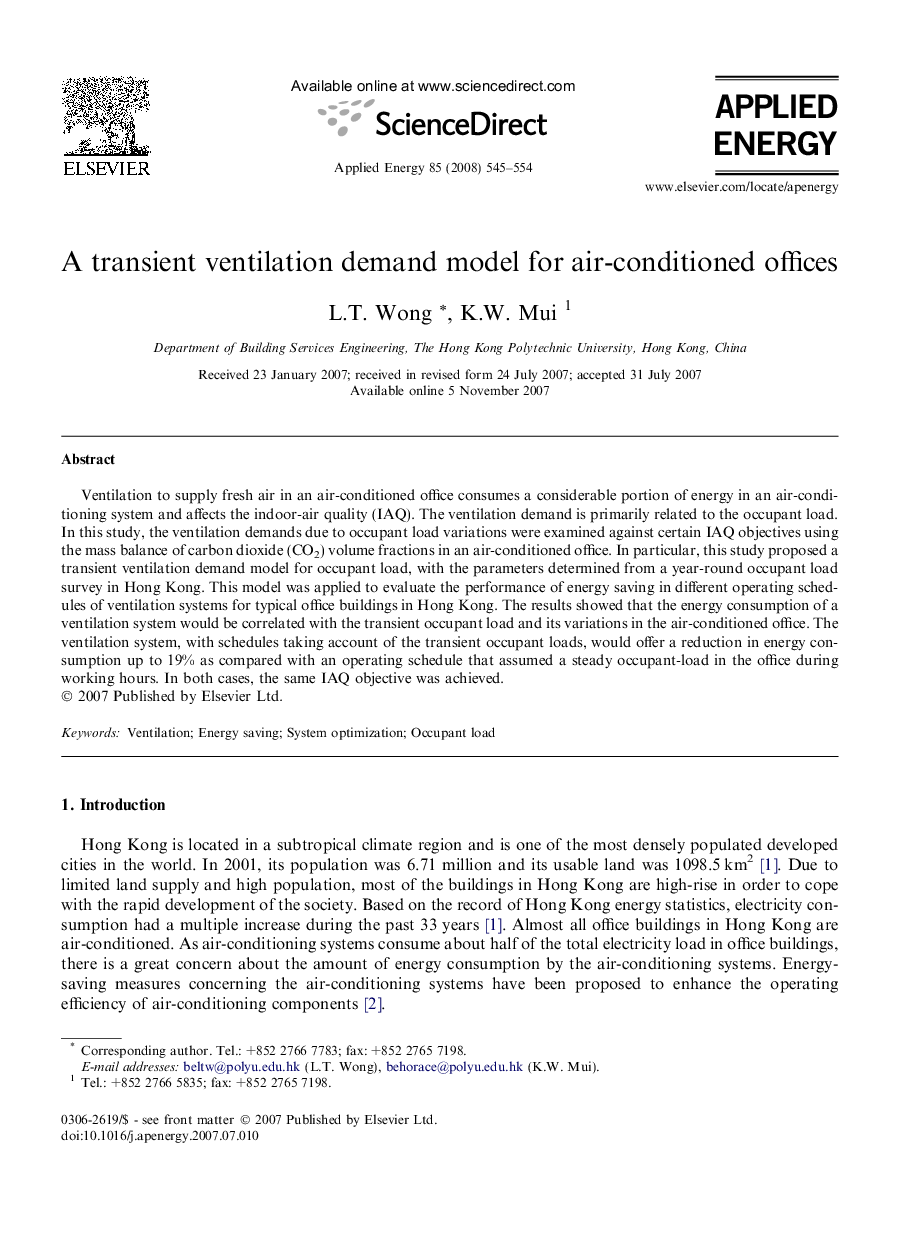| Article ID | Journal | Published Year | Pages | File Type |
|---|---|---|---|---|
| 245246 | Applied Energy | 2008 | 10 Pages |
Ventilation to supply fresh air in an air-conditioned office consumes a considerable portion of energy in an air-conditioning system and affects the indoor-air quality (IAQ). The ventilation demand is primarily related to the occupant load. In this study, the ventilation demands due to occupant load variations were examined against certain IAQ objectives using the mass balance of carbon dioxide (CO2) volume fractions in an air-conditioned office. In particular, this study proposed a transient ventilation demand model for occupant load, with the parameters determined from a year-round occupant load survey in Hong Kong. This model was applied to evaluate the performance of energy saving in different operating schedules of ventilation systems for typical office buildings in Hong Kong. The results showed that the energy consumption of a ventilation system would be correlated with the transient occupant load and its variations in the air-conditioned office. The ventilation system, with schedules taking account of the transient occupant loads, would offer a reduction in energy consumption up to 19% as compared with an operating schedule that assumed a steady occupant-load in the office during working hours. In both cases, the same IAQ objective was achieved.
